|
|
| Here are some photos from VNG, the Australian time signal station that was often heard until its close on December 31, 2002, along with a recording of the VNG signal. These were received in 1989 from Marion Leiba, head of the VNG Users Consortium and chief publicist for the station. | |
|
VNG, Australian Time Signal Station, recorded March 3, 1989, 1129 UTC, 5 MHz [0:46] |
|
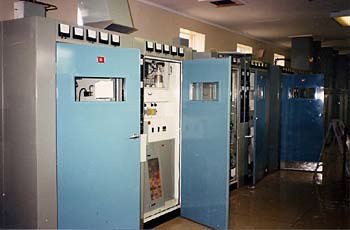 |
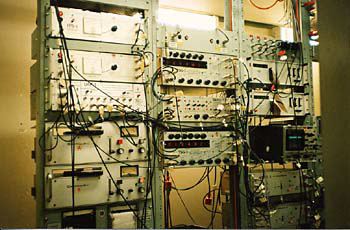 |
| The three VNG transmitters at Llandillo. The one on the far right was used for the 5 MHz. transmission. | Left hand rack: FFS-1, fixed frequency synthesizer to produce the carrier frequencies, and Spotmaster, a cartridge tape announcing machine producing the voice announcements. Center rack: TSG-3, the time signal generator; and SAS-2, supervisory system and alarm. Right hand rack: The 2nd and 3rd pieces from the top are the civil time receiver which produces slow time code giving day, year, hour and minute; and DCG-1, a DUT-1 code generator converting UT1 (astronomical time) to UTC. |
 |
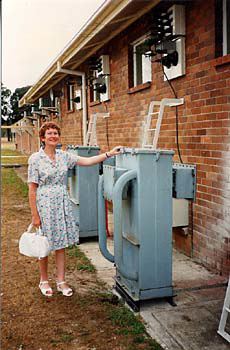 |
| TSG-3, the time signal generator; and SAS-2, the supervisory system and alarm. | Dr. Marion Leiba, head of the VNG Users Consortium, at the VNG transformers. The transmission lines coming from the transmitters and connecting to the horizontal aerial feeders are sticking out from the wall above the transformers. |
 |
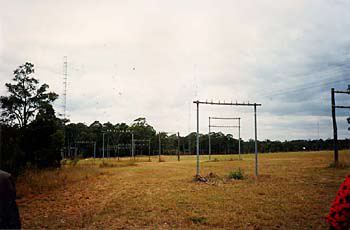 |
| Transmission lines. The transmitter hall with the VNG transmitters is at the left hand side of the brick building. | Transmission lines going to aerial supports for Wells Quadrant aerials. The vertical aerial used for VNG in early December 1998-early January 1989 is faintly visible in the right background. |
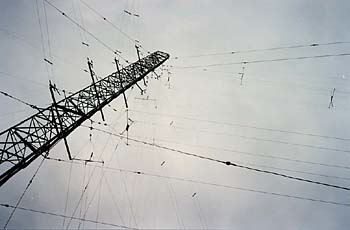 |
|
| Looking up an aerial support mast to three sets of Wells Quadrant aerials. You can see the center feed points, but not the far ends (which look similar). The two arms of each aerial are horizontal and at right angles (to give omnidirectionality), and each arm has four strands in a "box kite" arrangement to increase bandwidth. | |